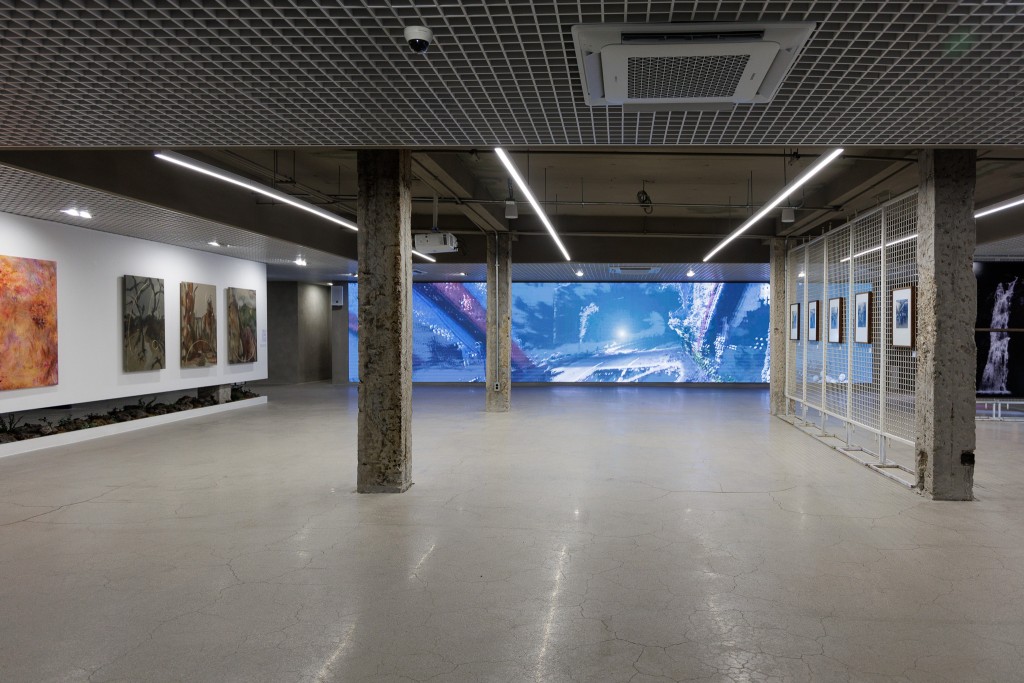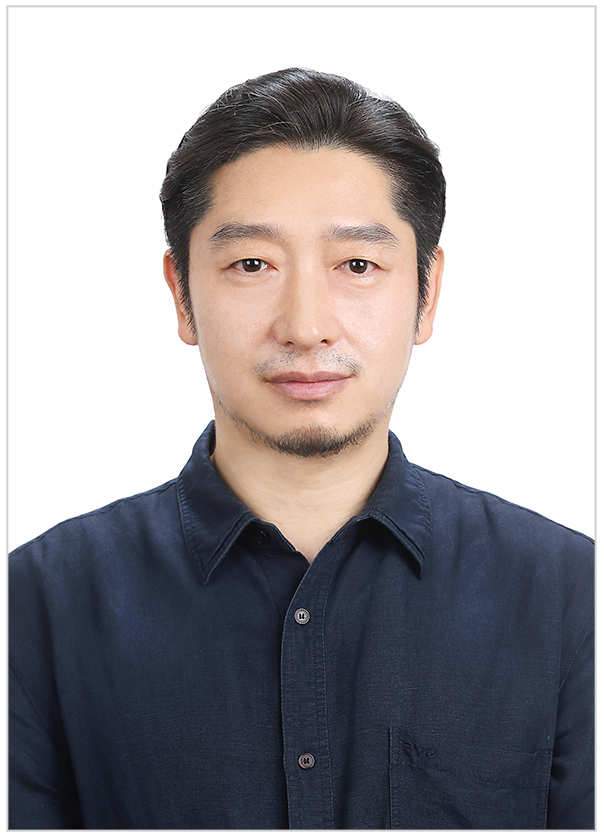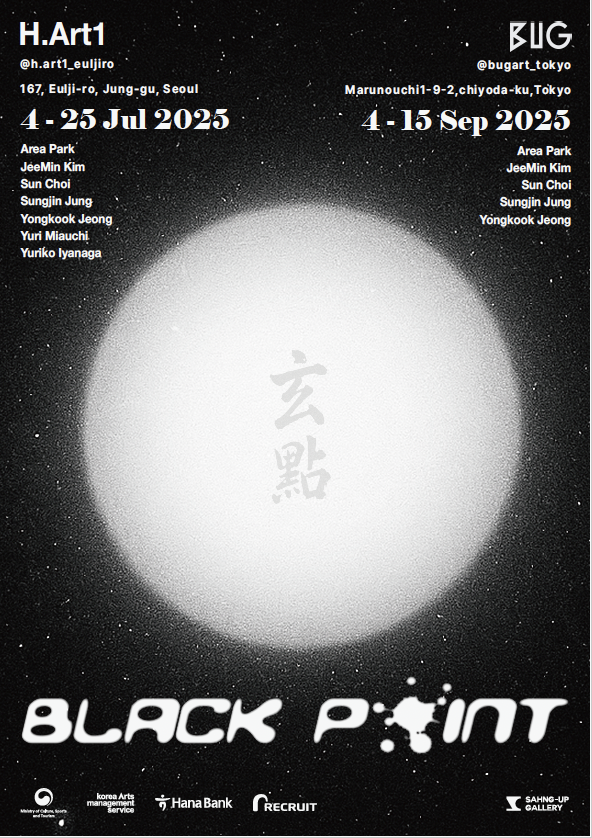
Photo:Hojun Lee
BUG, operated by Recruit Holdings Co., Ltd. is pleased to present an exhibition “Black Point” from Thursday, September 4th, 2025. This is a group exhibition with the concept of “black” held by BUG in collaboration with Sahng-up Gallery in South Korea. Sahng-up Gallery operates two galleries in Seoul, balancing a commercial perspective for sustainable activities with a non-profit perspective that welcomes the experimental endeavors of emerging artists.
Sahng-up Gallery’s efforts to nurture the art industry’s ecosystem from multiple perspectives align with BUG’s mission to support artists and art workers in building sustainable careers, despite differing approaches. This exhibition was planned as an opportunity for mutual inspiration through exchange between the two countries.
In advance of this exhibition, the finalists of the first BUG Art Award, Yuriko Iyanaga and Yuri Miauchi, participated in a group exhibition in Seoul this July. Additionally, in late August, several events focusing on the Asian art scene will be held as pre-events for this exhibition. BUG will continue to explore new developments through interaction with overseas spaces and artists/art workers.
Curator Chanje Yang‘s Comments
Black Point is an exhibition that centers on the absolute color black, illuminating contemporary artists’ sensory interpretations and experimental approaches. Grounded in the aesthetics of ink and the philosophy of color, the exhibition explores the materiality, contemplative potential, and performative possibilities of black through various media, including painting, photography, and installation.
About the exhibition
Artists’ Sensory Experiments on “Absolute Black”
Kazimir Malevich (1878–1935), founder of Suprematism and a pioneer of abstract art, composed his canvases using minimal abstract shapes in their most condensed forms. Through simple compositions featuring squares, circles, triangles, and crosses, centered around the black square, he sought to express a “pure feeling that transcends nature,” formed not by symbols, geometry, or patterns but by an inner order. For Malevich, black represented the ultimate definition of color and the peak that painting could reach.
Black is the “complete void” reached after absorbing all color, yet it can appear white when strongly illuminated due to its reflective quality. As such, black is both a material color formed by mixing all pigments in the CMY system and a color that, under the RGB light model, can potentially turn into white. In this dual structure of absorption and reflection, darkness and brightness, matter and light, black operates not as a mere absence but as a latent space containing all colors, a philosophical realm that crosses the boundaries of sensation and perception.
Black is the “complete void” reached after absorbing all color, yet it can appear white when strongly illuminated due to its reflective quality. As such, black is both a material color formed by mixing all pigments in the CMY system and a color that, under the RGB light model, can potentially turn into white. In this dual structure of absorption and reflection, darkness and brightness, matter and light, black operates not as a mere absence but as a latent space containing all colors, a philosophical realm that crosses the boundaries of sensation and perception.
Charred wood used in prehistoric cave paintings represents one of humanity’s earliest expressive tools, revealing black as the most primordial color. Between ancient sensory expression and the logical structure of modern abstraction, black has functioned as both the origin and culmination of materiality and as a decisive color imbued with philosophical reflection. In this sense, black symbolizes the origin of art across the strata of Eastern and Western history, culture, matter, and spirit. This exhibition aims to shed light on artists’ sensory interpretations and experimental attitudes toward black as an absolute color.
The conceptual starting point of the exhibition is East Asian ink (known as meok in Korean and sumi in Japanese), which has been central to East Asian painting traditions. East Asian ink symbolizes a visual philosophy that seeks to express the world through a single color. Within it are condensed durations of contemplation and sensitivity to the invisible. The aesthetics of East Asian painting—defined by void, monochromaticity, immateriality, and condensed perception—are reinterpreted in a contemporary context throughout this exhibition. Each participating artist reimagines this tradition in distinct ways.
Exhibiting new works by Korean artists
Yongkook Jeong experiments with materials and pictorial construction rooted in East Asian ink. Area Park explores the photosensitivity and residual qualities of photography through black-and-white prints and manual techniques. Sun Choi creates structures where concept and practice intersect through repetitive actions and modest gestures. JeeMin Kim constructs pictorial narratives by reconfiguring cultural elements of East and West. Sungjin Jung utilizes 3D graphics to portray recombined spaces within dreams and the unconscious.
In the RGB additive color model, black is a state where all values are zero—seemingly nothing, yet a space of latent possibility encompassing all colors. East Asian ink symbolizes this infinitude and carries a philosophy of expressing the world with a single hue. Black Point revisits the physical and philosophical conditions of color to re-question the meaning of black.
Event “First day talk show”
Date: Thursday, September 4th, 17:00-18:00
(on-site and live-streamed on Instagram, reservations required, free)
Overview
A talk event will be held with the exhibiting artists and curators. Taro Amano (Chief Curator, Tokyo Opera City Art Gallery) will be invited as a guest to talk about the concept of the exhibition and the works.
▼Speakers: Changje Yang (Owner and Curator of Sahng-up Gallery), JeeMin Kim (Artist), Sungjin Jung (Artist), Yongkook Jeong(Artist), Sun Choi(Artist), Area Park (Artist), Taro Amano (Chief Curator, Tokyo Opera City Art Gallery)
*Sequential interpretation will be provided in Japanese and Korean on the day.
*The date and time of the event may be subject to change. Please see the website for the latest information.
About Sahng-up Gallery
Sahng-up Gallery, which opened its doors in the center of Seoul, Eulji-ro, in 2017, has been hosting more than 10 exhibitions per year, focusing on the social role of art, particularly contemporary art. In 2021, a branch opened in Yongsan, and in 2023, the Sajik branch was launched.
Sahng-up Gallery strives to define clear social values at the intersection of art’s commercial and non-commercial aspects, aiming to present a vision for the future. It seeks to fulfill the social role that art can play in an era of rapidly changing social structures and unpredictable crises by sharing various discourses on contemporary Korean art.
https://sahngupgallery.com/index
Curator’s Profile

Chanje Yang is a curator and director based in Seoul, active since the early 2000s. He is the founder and director of Sahng-up Gallery, through which he has consistently introduced new currents and experimental practices in contemporary art.
He studied sculpture at Chung-Ang University Graduate School and gained extensive curatorial experience as head curator at Gallery Sagan and Gallery Hyundai. He later served as an advisory board member at Gallery Hyundai. Since founding Sahng-up Gallery in 2017, he has curated and organized numerous exhibitions that blur the boundaries between the public and private sectors, expanding the scope of curatorial experimentation.
His major curatorial projects include Data Vacuum and Digital Anomie (Hana Bank HARTONE, 2024), NEXT-UP (ONSU Space & Fine Paper Gallery, 2024), Factory of Dreams (Sahng-up Gallery Euljiro, 2023), Declaration of Denuclearization (Namsan Library & Mulberry Hills, 2023), CROSSING ONE (Hana Bank HARTONE, 2023), House Arrest (Sahng-up Gallery and associated venues, 2022), FLOATING GARDEN (Hyundai Department Store Mokdong, 2022), UNSEEN_ (Mullae Art Factory, 2022), and Flat–Tense (COEX, 2020).
Yang’s curatorial practice focuses on experimental exhibition formats, reinterpretation of urban spaces, and proposing new sensory experiences through the convergence of art and technology.
2025/9/4(THU)- 9/15(MON・HOLIDAY)
11:00-19:00
- Closed at 5:00 PM on September 4th
Tuesdays
Free
BUG


